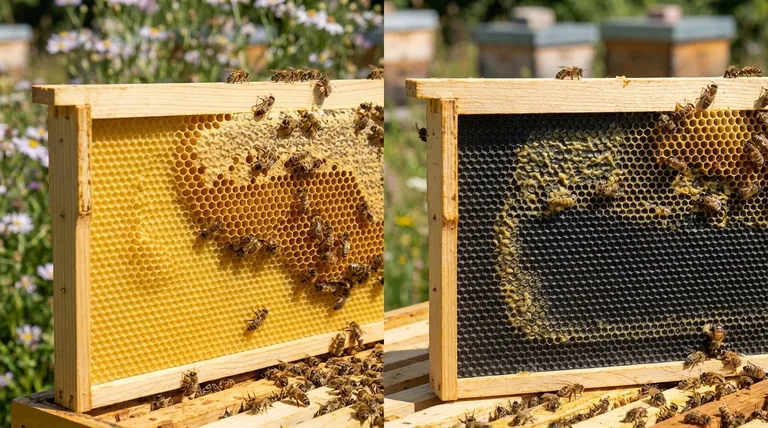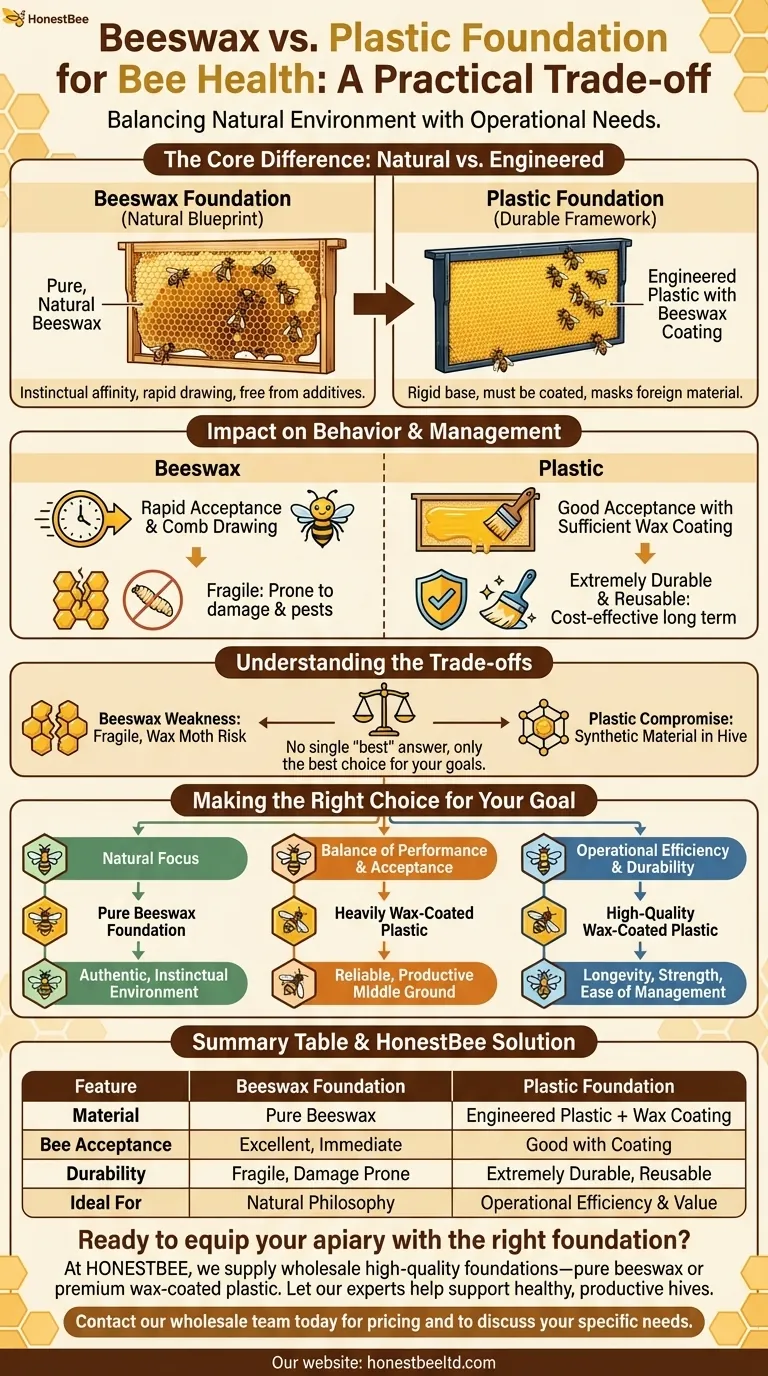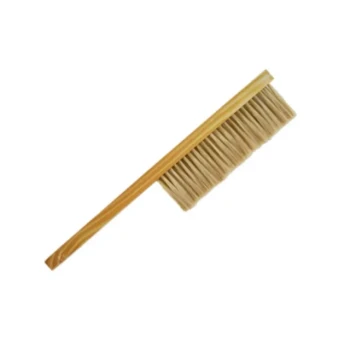For bee health, high-quality beeswax foundation is often considered the ideal choice due to its natural composition and immediate acceptance by the colony. However, modern, well-coated plastic foundation is also highly effective and does not inherently harm bees, offering significant advantages in durability and reusability that also contribute to a well-managed, healthy hive.
The decision between beeswax and plastic foundation is not a question of good versus bad for bee health, but a practical trade-off. Your choice should align with your beekeeping philosophy, balancing the desire for a natural hive environment against the operational needs for durability, efficiency, and long-term cost.

The Core Difference: Natural vs. Engineered
The fundamental distinction between foundation types lies in their material origin and intended function. Understanding this is key to choosing the right one for your hive.
Beeswax Foundation: The Natural Blueprint
Beeswax foundation is made from the very substance bees produce to build their home. This creates an environment that is as natural as possible.
Bees have an instinctual affinity for pure beeswax, meaning they typically begin drawing out comb on it very quickly and without hesitation.
Because it is a natural product, it is free from the potential chemical additives that might be found in some plastics.
Plastic Foundation: A Durable Framework
Plastic foundation is an engineered solution designed for strength and longevity. It is not meant to be used bare; it serves as a rigid base for the bees to build upon.
Crucially, plastic foundation must be coated in beeswax. This coating masks the foreign material and provides the familiar scent and texture bees need to stimulate comb building.
Many beekeepers apply an extra heavy layer of beeswax to their plastic frames to accelerate acceptance and comb construction even further.
Impact on Bee Behavior and Hive Management
Your choice of foundation directly influences how bees interact with their frames and how you manage them throughout the season.
Acceptance and Comb Drawing Speed
Bees readily accept and draw out comb on beeswax foundation. This rapid development is beneficial for a colony's growth and productivity.
While bees are more hesitant with plastic, a sufficient wax coating encourages natural comb building and allows bees to add their own scent markings, which is critical for colony acceptance.
Durability and Reusability
Plastic foundation's primary advantage is its extreme durability. It will not break during honey extraction and is resistant to damage from pests like wax moths and mice.
These frames can be cleaned and reused for many seasons, making them a highly cost-effective and low-maintenance option over the long term.
Understanding the Trade-offs
Neither option is perfect. A successful beekeeper understands the compromises associated with their chosen equipment.
The Weakness of Beeswax
Pure beeswax foundation is fragile. It can easily be damaged during installation or hive inspections and is especially prone to sagging or breaking in the extractor on hot days.
It is also a target for wax moths, which can quickly destroy combs, particularly when in storage.
The Compromise of Plastic
The main drawback of plastic is philosophical: it introduces a synthetic material into the otherwise natural world of the beehive.
While a good wax coating minimizes any negative impact on the bees' direct interaction, the plastic frame remains an artificial component.
Making the Right Choice for Your Goal
Your beekeeping philosophy should guide your decision. There is no single "best" answer, only the best choice for your specific objectives.
- If your primary focus is natural beekeeping: Choose pure beeswax foundation to provide the most authentic and instinctual environment for your bees.
- If your primary focus is operational efficiency and durability: Choose high-quality, wax-coated plastic foundation for its longevity, strength, and ease of management.
- If your primary focus is a balance of performance and bee acceptance: Heavily wax-coated plastic foundation offers a reliable and productive middle ground that most colonies readily accept.
Ultimately, a healthy colony is the product of good management, and either foundation type can support a thriving hive when used correctly.
Summary Table:
| Feature | Beeswax Foundation | Plastic Foundation |
|---|---|---|
| Material | Pure, natural beeswax | Engineered plastic with beeswax coating |
| Bee Acceptance | Excellent, immediate | Good with sufficient wax coating |
| Durability | Fragile, prone to damage | Extremely durable, reusable for years |
| Ideal For | Natural beekeeping philosophy | Operational efficiency & long-term value |
Ready to equip your apiary with the right foundation?
At HONESTBEE, we supply commercial apiaries and beekeeping equipment distributors with the highest-quality, wholesale-priced foundations—whether your priority is the natural benefits of pure beeswax or the unmatched durability of premium wax-coated plastic.
Let our experts help you choose the best equipment to support healthy, productive hives. Contact our wholesale team today for pricing and to discuss your specific needs.
Visual Guide

Related Products
- Beeswax Foundation Sheets Beehive Foundation for Wholesale
- Manual Beeswax Comb Foundation Machine Wax Foundation Mill Embossing Machine
- Colorful Silicone Beeswax Foundation Mold Mould for Beekeeping
- Food Grade Plastic bee Foundation for Bee Frames
- Metal Queen Bee Excluder for Beekeeping
People Also Ask
- How do you store beeswax foundation? Prevent Wax Moth Damage and Preserve Quality
- What are the sizes of natural worker and drone cells? Guide to Natural Beehive Architecture
- How do beeswax foundations save bees time and energy? Boost Hive Productivity & Honey Yield
- What is 'foundation' in beekeeping, and why is it used? Optimize Hive Management & Honey Production
- What happens if foundation is given to colonies during a nectar dearth? Avoid Wasted Equipment and Stressed Bees



















